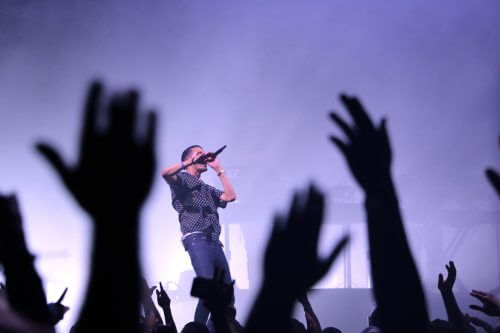Does the public have the right to know which creative decisions were made through technological means?

I will never forget the first time I watched the show"Juggling on a piano". It was in December 1989, on The Tonight Show, hosted at the time by Johnny Carson.
Carson's guest played on an oversized piano that was placed on the floor - by bouncing juggling balls on the piano keys, bouncing the balls at an increasing rate. He amazed the viewers by playing "to Eliza” by Beethoven - and to the lightning-quick passage played afterwards, from “Hungarian Rhapsody No. 2” by Liszt, the audience went wild with enthusiasm. Is it really possible to play such a wonderful virtuoso on the keys in such perfect coordination with the rhythm?
Well, the answer is: absolutely not!
When the camera approached the juggler, I could see that the "piano" was nothing but a touch screen that was about 1.20 meters wide, and it looked like the "keys" were simply painted on it. In fact, it didn't matter where the balls hit the board. Each such hit caused the next sound to be played in a pre-programmed sequence of sounds. The performer controlled the rhythm, but everything else was done automatically. It goes without saying that bouncing balls at such a rate indicates remarkable skill, and the whole show was a lot of fun. But it was evident that the viewers who saw him in the studio believed that the juggler not only bounces balls, but also hits specific keys.
At the sight of the audience watching as if bewitched by the spectacle, I had doubts, and I still wonder: should an artist reveal to what extent he is aided by technology in his works?
For years I was an avid reader of the magazine Popular Photography - Until in March 2017, after 80 years, the journal stopped appearing. Its mission was to teach readers how to take better photos. For this purpose, next to each photo published in it, the settings used by the photographer were given, for example: "1/400 seconds at f/5.6, ISO 1000". These strings of numbers have always caused me a feeling of helplessness. How will a photography enthusiast like me ever learn what is the desired combination of shutter speed (exposure time), aperture key and light sensitivity for a particular image?
In the end, a professional photographer revealed a little secret to me: even the pros often allow the camera to determine all or some of the settings. They can choose, for example, shutter priority mode (where the camera chooses the shutter key), aperture priority mode (where the camera chooses the shutter speed), or even full auto mode (where the camera chooses all settings).
However, photos taken in automatic mode also appeared in the magazine with settings such as "1/400 seconds at f/5.6, ISO 1000". Definitions of this type were indeed the definitions of the image - but even if the readers were not aware of it, they were chosen by the camera, not by the person behind it. These definitions misled us, the amateur photographers, who aspired to reach the level of the best professionals.
Software GarageBand Apple's for Mac allows the user to compose entire orchestral "pieces" simply by dragging tiles into a tableau. And the result always sounds wonderful, whether the creator has any knowledge of topics such as rhythm, pitch or harmony or whether he has no idea in the field. When the GarageBand software was launched, the product manager in charge of it told me that even though the composition process is semi-automated, the software gives the user a sense of the real thing. Novices in the field can draw inspiration and encouragement from her, start learning music or even playing a certain instrument.
good and beautiful But how can we appreciate the talent of any artist without knowing which part of his artwork is indeed his original work? Should this have an effect on the monetary value of his works? And what about commercial musicians who use GarageBand software to produce their soundtracks - like Oasis band And many other indie bands?
It's no secret that technology aids almost every creative endeavor made today, starting with the moment when little four-year-old children drip paint onto a rotating board in "creations" Spin-art. We are also aware that computers are used to create the special effects in Hollywood movies and that most pop songs are produced with the help of the audio processor auto tune Adjusts sounds automatically and corrects the pitch. But in these cases, the audience knows that the work was produced with the help of machines.
The situation is different when the involvement of technology in the creative process is kept a secret and all the credit goes to the creator. For this reason, the common practice of Lip sync (lip syncing) in live performances is still controversial and for the same reason, athletes who secretly take stimulant drugs or use other means to improve performance are disqualified. Full disclosure of an artist who uses technological aids to produce his works is important not only for reasons of intellectual honesty; Discovering the origins of the work will allow us to evaluate it correctly, and this, in view of the rising wave of robots entering the field of creative arts. (And if you haven't heard about it yet, then today, robots are able to compose Corals and draw portraits.)
At this time, musicians, artists and professional performers can also convert human talent with an on-off switch. And the question arises: isn't it the right of the public to know who is who and to differentiate between the two?
About the writers
David Fogg - The senior columnist and host at Yahoo Tech, and previously hosted several NOVA mini-series on the US public television network (PBS).
for further reading
